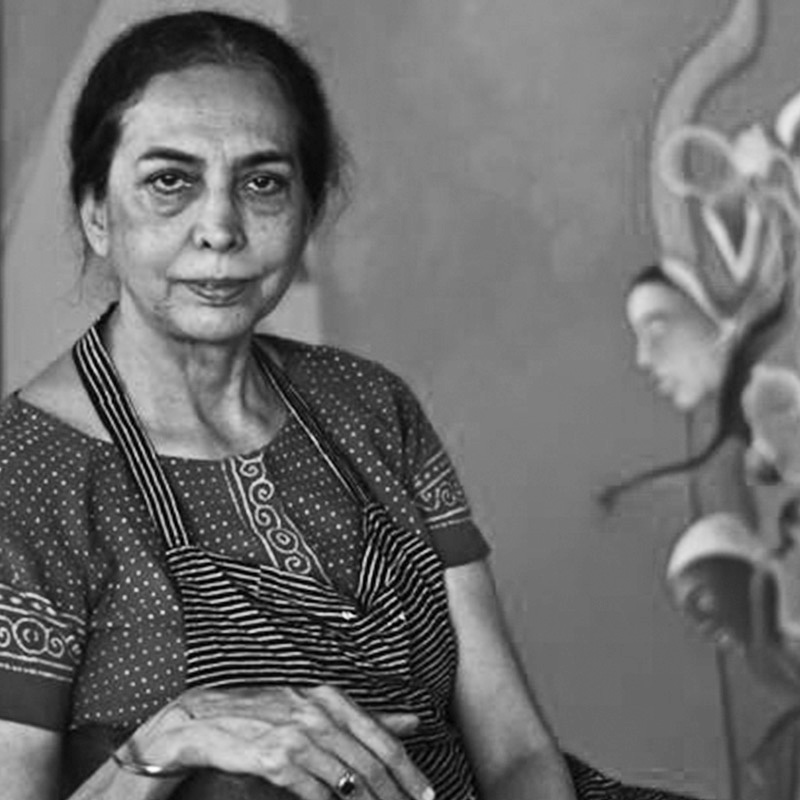
Arpana Caur was born in New Delhi in 1954. From a Sikh family which fled the Pakistani West Punjab to India in 1947, Caur’s art draws on her experiences growing up in a politically unstable environment. She earned her MA in Literature at the University of Delhi and is largely self-taught as an artist.
A recurring theme in Caur’s works are her experiences of societal strife and the persona of the victim. As a result, her paintings often depict female figures emerging as symbols of solidarity, confronted by the tragedies of political violence and industrialisation. Clothing, also a repeated motif, confirms and subverts the traditional image of women. She also draws inspiration from Punjabi literature and Bhakti poetry which contribute to the strains of melancholy, mysticism, and devotion that come through in her work. Folk painting and Pahari miniatures also inspire her manipulation of pictorial space. Caur’s works respond to the surroundings and events of her life, from the crowded Patel Nagar of her childhood, to specific events like the anti-Sikh riots of 1984, the rape of Maya Tyagi, and the widows of the Chasnala mining disaster.
From the mid 1970s, her works are mostly autobiographical revolving around her family and her Patel Nagar environment. Heavy, muscular women, amidst urban chaos are often featured, along with excessive violence such as riots, guns, police, and severed heads. However, in the mid 1980s, Caur’s works shifted towards calmer scenes, with figures against natural landscapes like the earth, sky, and water, evoking ideals of transcendence. From the 1990s, Caur shifted her focus once again, focusing on the image of the labouring woman.
In 1995, Caur was commissioned by Hiroshima Museum to create a large work for their permanent collection on the occasion of the 50th Anniversary of the Holocaust. She was an Advisory Committee member for the National Gallery of Modern Art, the Lalit Kala Akademi and Sahitya Kala Parishad in 2001. She has received numerous awards, including the Limca Book of Records’ People of the Year award for India (2014); Lifetime Achievement award at the Sikh Art and Film Foundation (New York, 2010); and at the Rotary Club of Delhi (2011). As well as over 20 exhibitions, both solo and group, Caur’s works are in the collection of several important institutions and private collections in India and abroad. She lives and works in New Delhi.